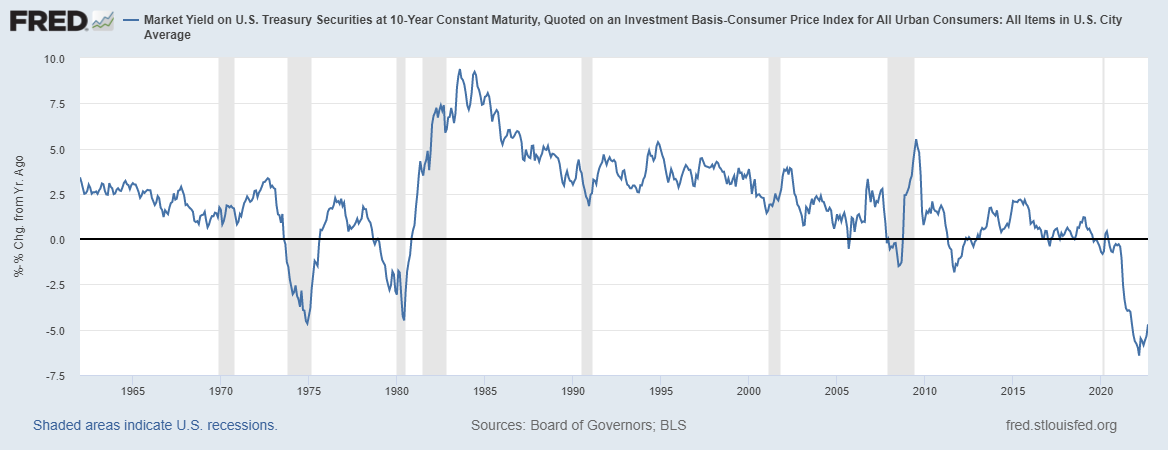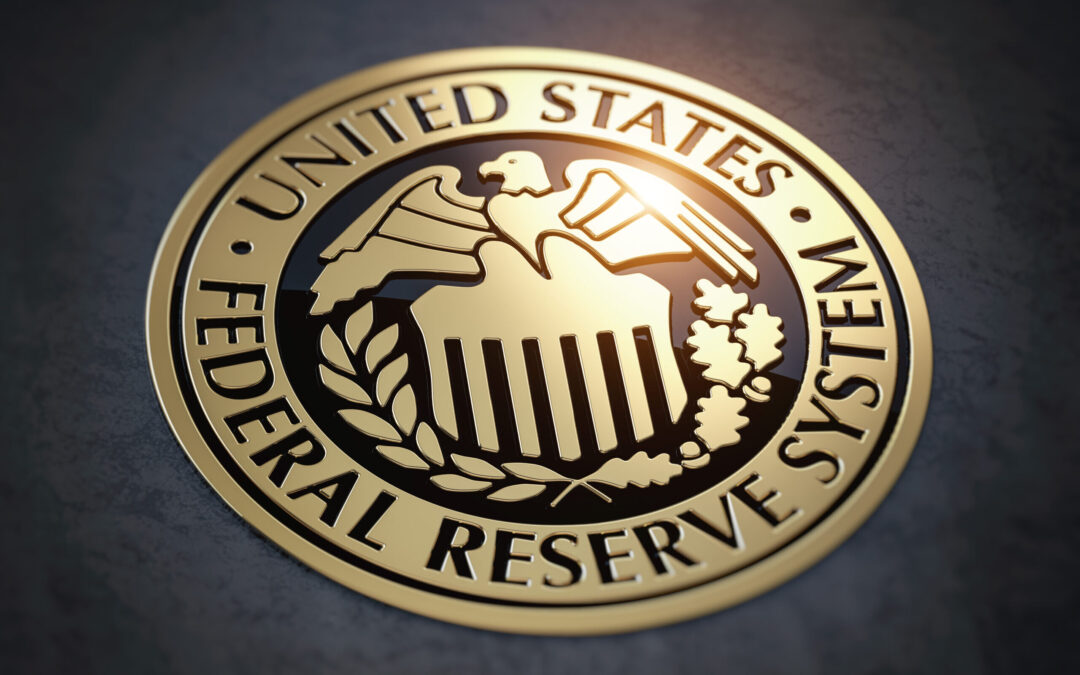The Federal Reserve is raising interest rates to fight inflation.
Latest data shows the battle isn’t going well.
The Consumer Price Index rose 8.2% in the past year.
Fed officials like to exclude food and energy prices to better understand the trend in inflation.
In September, this measure confirmed the outlook is grim.
Persistent Inflation Predicts the Fed’s Moves
Core inflation rose 6.7%, the highest reading since August 1982.
In 1982, core inflation fell from its 1980 high of more than 13%.
The index first moved above 7% in 1974.
Inflation tends to be persistent.
Once it takes hold, it isn’t easy to end.
One sign that the Fed won will be when real interest rates are greater than zero.
Real interest rates deduct the impact of inflation from the rate.
The chart below shows real rates on 10-year Treasury notes.
Real Interest Rate on 10-Year Treasury Note Well Below Zero

Source: Federal Reserve.
Negative real rates indicate inflation is above the current interest rate.
There were brief dips into negative territory in the 2008 global financial crisis and the euro crisis in 2011.
The last period of sustained negative rates was during the high-inflation period of the late 1970s.
We seem to be duplicating that time now.
When to Expect Lower Rates
The Fed is struggling to get inflation under control.
In the 1970s, the Fed eased too soon, and inflation resumed.
It’s unlikely the current Fed will make that same mistake.
We should expect higher rates until real rates are positive for an extended period.
There are two ways real rates can move back above zero.
Inflation can fall.
Or interest rates can move above the rate of inflation.
With inflation above 8%, that would mean a yield of 9% on the 10-year Treasury note.
Bottom line: We know the Fed prefers the former solution.
The lack of progress so far means the latter is an unfortunate possibility.
That means the bear market in bonds and stocks could last for months.
Click here to join True Options Masters.




